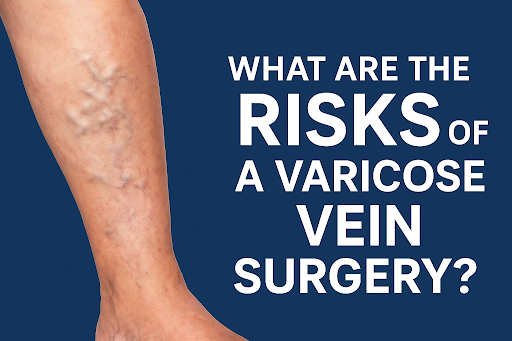Peripheral neuropathy, a condition that affects millions worldwide, manifests through pain, numbness, and a host of other symptoms that can severely impact one’s quality of life. Traditionally, its management has relied on a combination of medications, physical therapy, and lifestyle modifications aimed at symptom relief and slowing progression.
However, with advancements in medical technology, shockwave therapy emerges as a potential game-changer for those battling this condition. This article delves into the relevance of shockwave therapy in peripheral neuropathy treatment, exploring its scientific foundation, benefits, and how it could complement existing treatment strategies.
Understanding Peripheral Neuropathy
Peripheral neuropathy results from damage to the peripheral nerves, leading to a disruption in the communication between the brain and the rest of the body. This condition can stem from various causes, including diabetes, injuries, infections, and exposure to toxins. Symptoms vary widely but commonly include tingling, numbness, pain, and muscle weakness, significantly affecting daily activities and quality of life.
Despite the availability of treatments aimed at managing symptoms and addressing the underlying causes, many patients find these conventional options limited, seeking alternative or complementary therapies to alleviate their discomfort.
What is Shockwave Therapy?
Shockwave therapy is a non-invasive treatment that uses high-energy sound waves to initiate biological effects within the body. Though initially developed for dissolving kidney stones, its application has broadened to include treating musculoskeletal conditions, promoting wound healing, and more recently, peripheral neuropathy.
The technology behind shockwave therapy involves generating shockwaves outside the body, which are then directed to the affected area to stimulate healing at the cellular level. There are primarily two types of shockwave therapy: focused and radial, differing in the area they target and the depth of penetration.
The Science Behind Shockwave Therapy for Peripheral Neuropathy
The therapeutic effects of shockwave therapy on peripheral neuropathy are attributed to its ability to enhance blood circulation and stimulate the regeneration of nerve cells. Studies suggest that shockwaves can improve nerve function and reduce symptoms by promoting the release of growth factors, reducing inflammation, and enhancing angiogenesis (the formation of new blood vessels).
Clinical trials have shown promising results, with patients experiencing significant reductions in pain and improvements in sensory functions. These benefits highlight shockwave therapy’s potential as a non-pharmacological treatment option, offering a novel approach to managing peripheral neuropathy.
Comparing Shockwave Therapy to Traditional Treatments
When compared to traditional treatments like medications and physical therapy, shockwave therapy stands out for its non-invasive nature and minimal side effects. While medications can provide relief, they often come with side effects and may not be suitable for all patients. Physical therapy, on the other hand, requires ongoing commitment and may not always offer immediate symptom relief.
Shockwave therapy, with its ability to target the underlying causes of neuropathy, offers a unique advantage. However, it’s essential to acknowledge that shockwave therapy should not replace conventional treatments but rather serve as a complementary approach, enhancing the overall efficacy of a patient’s treatment plan.
How to Incorporate Shockwave Therapy into Your Treatment Plan
Incorporating shockwave therapy into a peripheral neuropathy treatment plan begins with consulting a healthcare provider experienced in this modality. They can assess the suitability of shockwave therapy based on individual conditions and overall health status.
A typical shockwave therapy session involves targeting the affected areas with shockwaves, with each session lasting about 5 to 10 minutes. Patients might require multiple sessions over several weeks, depending on the severity of their symptoms. While some may experience immediate relief, others may notice improvements gradually over time.
Cost is a consideration, as insurance coverage for shockwave therapy can vary. Patients should discuss these aspects with their healthcare provider to make an informed decision.
Potential Challenges and Limitations
Despite its benefits, shockwave therapy is not suitable for everyone. Patients with certain medical conditions, such as those with blood clotting disorders or infections in the target area, may not be candidates for this treatment. Additionally, while research supports its use for peripheral neuropathy, further studies are needed to fully understand its long-term efficacy and optimal treatment protocols.
Conclusion
Shockwave therapy presents a promising addition to the peripheral neuropathy treatment landscape. Its ability to address pain and improve nerve function non-invasively makes it an appealing option for those seeking alternatives to traditional therapies. However, it’s crucial for patients to consult with their healthcare providers to determine if shockwave therapy is a suitable option for their specific condition.
As research evolves, the potential for shockwave therapy to play a vital role in treating peripheral neuropathy and enhancing patients’ quality of life becomes increasingly apparent. With its innovative approach to pain management and nerve regeneration, shockwave therapy might indeed be the missing piece in many peripheral neuropathy treatment plans.
Exploring shockwave therapy as a complement to existing treatments opens new avenues for managing peripheral neuropathy. By offering an alternative approach that targets the condition’s underlying mechanisms, it holds promise for those seeking relief from their symptoms and a better quality of life.








